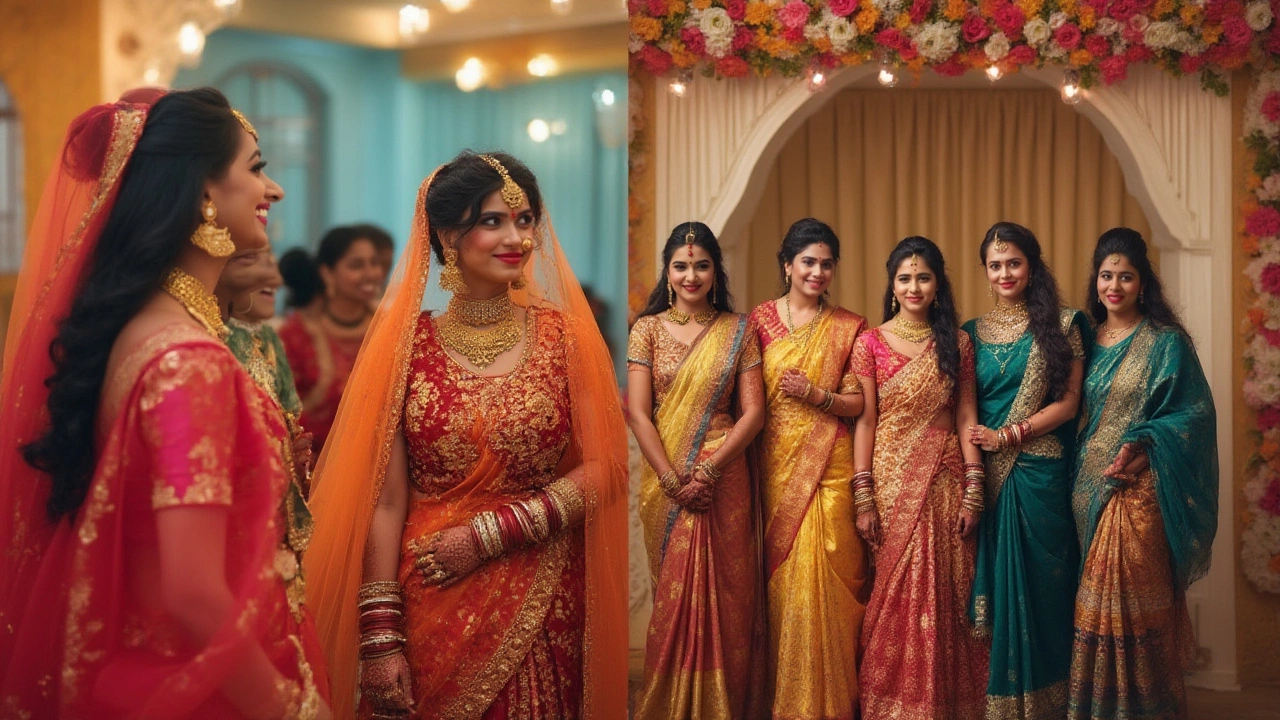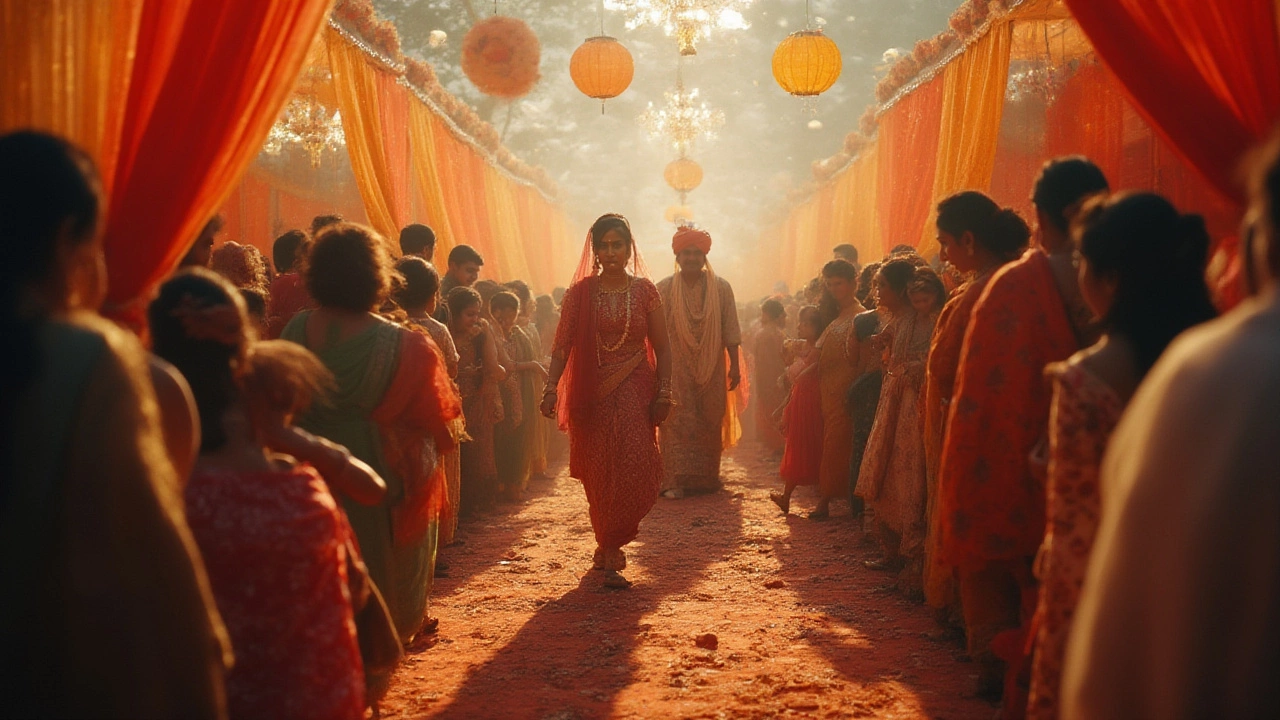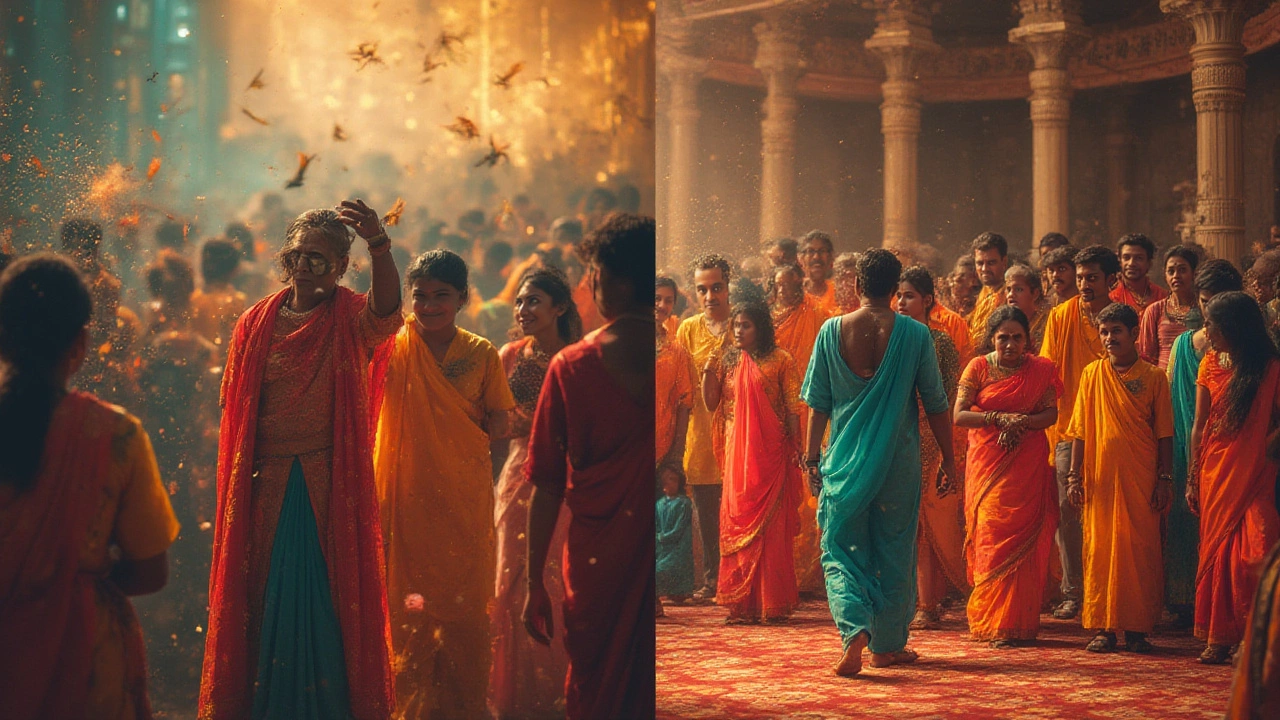Candid vs Traditional Photography: Which Style Captures Your Moment Best?
 Jul, 29 2025
Jul, 29 2025
My son Aarav still giggles at his baby pictures. Some are those stiff, perfect, everyone-smiling-at-the-camera shots, the kind we sent to grandparents. But his favorites? The blurry, goofy, not-a-care-in-the-world moments. It makes you wonder—when it comes to photography, what matters more: a flawless pose or the raw story in a split second? People still argue over whether candid or traditional photography is better. Spoiler: there’s no one-size-fits-all answer. The magic is in the details, so let’s break down what really sets these styles apart and why it matters for your memories.
What Makes Candid and Traditional Photography Different?
You walk into a wedding and spot the photographer. Sometimes, you see them orchestrating people, barking instructions, arranging family members like chess pieces. The resulting photos are neat, formal—pinned forever in family albums. That’s traditional photography. It’s all about control. The photographer tells you where to stand, how to tilt your chin, and even when to fake a laugh. The goal: get everyone looking sharp, tidy, and, well, traditional. Think school photos, studio portraits, or massive group wedding shots where uncles fight for the front row.
Now, candid photography is a completely different animal. Here, the photographer is almost invisible, lurking behind guests, blending into the background. There’s no “say cheese!” and zero staged smiles. Instead, they’re on the hunt for those real moments—a tearful hug, a secret glance, a burst of laughter over a bad joke. Candid shots capture raw, honest emotion. Do they always flatter everyone? Nope. But they show what actually happened, not just what everyone wished they looked like.
Let’s get concrete. A Mission Photographic study from 2023 found that 67% of couples ranked candid wedding photos as their top favorite while less than 35% even printed their formal, traditional ones. Why? Candid images make people feel like they’re reliving the day, not just remembering it. Meanwhile, traditional portraits are unbeatable for documentation. Imagine trying to trace your family tree without those legacy group photos—good luck!
The key differences come down to: setup, emotions, and storytelling. Traditional photography is crisp, methodical, and aims for a timeless finish. Candid style breathes life into stills, turning a frozen image into something that feels alive. Both have unique challenges: with traditional, the photographer needs people skills to coerce several generations into one smiling shot. With candid, anticipation and ninja-level timing are crucial—miss the moment, and it’s gone for good.
If you’re dreaming up your own shoot, think about the vibe you want. Studio-like precision and organized memories? Traditional. A joyous visual story that feels like flipping through your life as it really happened? Candid. The best photographers often blend both, but there’s no denying they sit at opposite ends of the spectrum.

Pros, Cons, and Surprising Realities for Each Style
You might remember a wedding photo session that seemed to last forever. Rows of cousins lined up, kids fidgeting, grandparents nearly asleep. That’s the downside of traditional photography: it can take ages, and by the end, even the best smiles wear thin. But the payoff is structure. Every important guest is included, and no one is left out. Here’s the fun part—if you ever need a photo for your office desk or your LinkedIn page, nothing beats a sharp, classic portrait. They’re evergreen for a reason.
Traditional photography can feel stiff and sometimes old-fashioned, but the technical quality is usually top-tier. The photographer controls everything—lighting, angles, background. So, you’re far less likely to get weird photo-bombers, awkward squints, or windblown hair disasters. If you want to look your absolute best, traditional is hard to beat.
Now, candid photography can deliver pure gold—but also pure chaos. Without direction, guests may look away from the camera, some hilarious faces sneak in, and not every shot is Instagram-worthy. The flip side? You get moments that are impossible to fake—a best friend wiping away a tear, your toddler dancing mid-buffet, a grandparent's genuine laugh. When candids work, they stop time. Data from The Big Lens Analytics Survey (2024) show that candid photos get shared three times more on social media than traditional ones. Authenticity is the secret sauce; people crave real stories, not filtered perfection.
It’s not all fairy dust, though. Some events really need traditional photography. Try getting a formal business award shot with everyone lounging around casually—it just doesn’t work. Likewise, candid shooters must be masters of observation and sometimes must work in less-than-ideal lighting or chaotic settings. Plus, traditional albums are still king for official records and family milestones.
Take a look at this side-by-side comparison:
| Aspect | Traditional Photography | Candid Photography |
|---|---|---|
| Setup | Planned, posed | Unplanned, spontaneous |
| Emotion | Formal, composed | Raw, genuine |
| Editing | Polished, often retouched | Light touch, natural |
| Ideal For | Group photos, ceremonies | Reception, behind-the-scenes |
| Popularity (2024) | 48% | 72% |
One of the wildcards is price. Candid photography tends to be more expensive. The photographer is on duty longer and needs quick reflexes and often carries a bag full of fast lenses. Traditional setups might be faster—snap, repeat, move on. But if you want hundreds of unseen moments, expect to pay for the extra skill and hustle.
Let’s not forget editing time. Traditional shots take more touch-up work. Stray hairs, closed eyes, Uncle Ramesh’s tie flying in the wind—these can all be fixed. Candid editing is more about color correction and slight tweaks. The whole point is to keep the vibe real, not perfect. That saves time, which can lower the cost if you’re on a tight budget.
Here’s a tip I learned after having several events shot for Aarav’s birthdays: mix styles. Get formal groups done first, when everyone is fresh. Then tell your photographer to go stealth and snap candids for the rest of the day. You’ll avoid everyone pouting or fleeing when they see a camera pointing their way.

How to Choose the Best Style for Your Event—or Blend Both
This debate isn’t just theory—your choice shapes your memories forever. Before you scroll Pinterest and hand over a fat deposit to a photographer, ask yourself: What means more to you? Polished, frame-worthy images or messy, real-life energy?
The decision depends on the event. Weddings, anniversaries, corporate functions, birthdays—each has its own tempo. Weddings, for instance, nearly always benefit from a mix. You need those family lineups for the mantelpiece and insurance claims. But you’ll treasure the silly dance-floor candids and teary parent close-ups even more. A wedding shot list is a clever trick—jot down which moments need classic treatment, then trust your photographer to go wild when the party starts. In India, it’s common to have two photographers at a big event: one to wrangle the family, another to wander and hunt for candids.
For smaller events or personal shoots—like birthday parties or casual get-togethers—lean candid unless grandma insists on lining up everyone. Those real moments become more valuable with time, especially as kids grow or grandparents become memories. Ask any parent: the spontaneous images matter most. My living room has only candids on the wall because every staged studio shot of Aarav looks like a kid forced into a bow tie. True story!
The real key? Talk honestly with your photographer. Ask to see a full gallery from their past work, not just the highlights on Instagram. A pro knows how to adapt. Some moments call for direction—think cake-cutting or award ceremonies—while others thrive on being unplanned, like toddlers attacking balloons or a dance circle gone wild.
If you’re doing this at home, not hiring a pro, here’s a quick cheat sheet:
- For traditional shots: Pick a solid backdrop, find some good light, check everyone’s hair and clothing. Keep instructions clear: “Look this way, smile!” Snap several shots to beat the odds of someone blinking.
- For candid shots: Keep your camera ready all the time. Watch for emotion, movement, fun interactions. Use burst mode if your camera has it. Don’t worry about perfect composition. Catch the messy, joyful bits.
- Mix lenses if possible—a fast 50mm for portraits, a wide-angle for groups. The more angles, the richer your story will be.
Worried about missing out? Many people combine both. It’s common to book a wedding package that lists ninety minutes of traditional plus all-day candid coverage. Pros often bring extra shooters for big events, so you get every tear and every posed smile. This works especially well if you want a coffee table album with variety.
When it comes to tech, newer cameras and phones have made spontaneous shooting way easier. Today’s smartphones, like the Samsung Galaxy S25 Ultra or the iPhone 16, have fast autofocus and smart AI features perfect for candids. But here’s the twist: even the best tech can’t fake real emotion. That’s why the style choice always comes back to you, not your gear.
If you’re someone who craves a story in your pictures, give candid a try. But if you love family traditions, nostalgia, and perfect poses, go traditional. And if you want it all? Get a little bit of both. That way, years later when you’re laughing with your kids—like I do with Aarav—the best photos aren’t just pretty to look at, they take you right back to how it felt.
So, which is better? It’s never just black or white. The answer is in your story—and the real magic happens when you stop worrying about the "right" style and focus on capturing the moments that matter most to you.